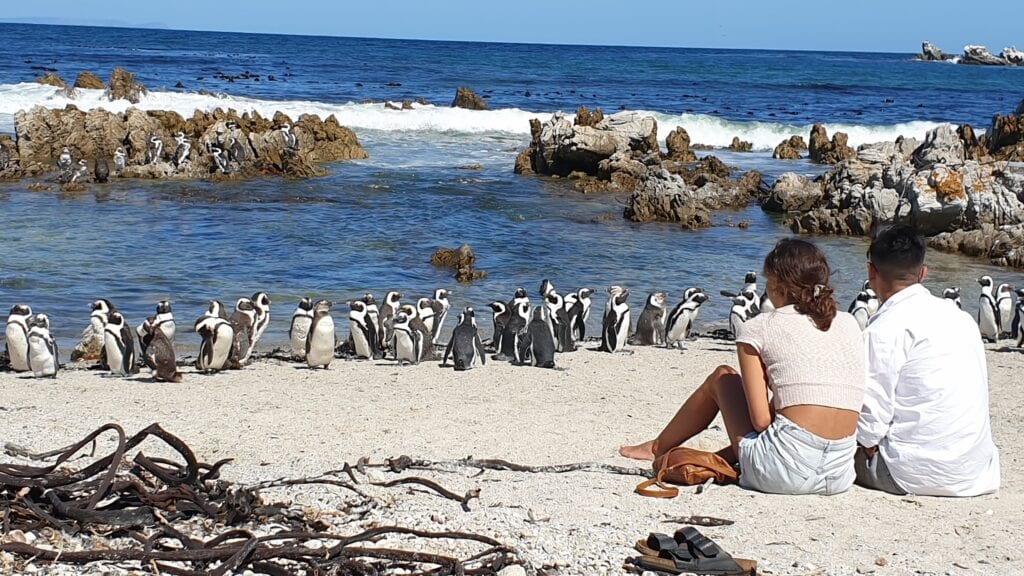Penguins in Africa?
Ah…. Africa. The plains, the forests, the wildlife. When you think of animals, you’ll likely see in your mind’s eye The Big Five – lion, elephant, rhino, buffalo and leopard. Then other land animals will show up, like giraffe, cheetah and wildebeest. Or smaller animals like impala, duiker and springbok. You might think of the deadliest animals such as crocs, hippo’s, hyena and the black mamba. You’ll have heard of water animals like whales and sharks or their flying counterparts, ranging from eagles to hawks. But we’ll bet you have not thought of a very special animal. So now combine these last two categories and think of an animal that is both water and a bird. Ducks? Yep, we’ve got them, but it’s not the right answer. No, think Antarctica. You’ve got it, penguins! What, penguins – in Africa?
Penguins – in Africa? Yes, they live there. Honestly! The Benguela Stream flows from Antarctica to the southern tip of Africa and brings cold water, but more importantly lots of fish to our waters. So, let’s meet this African Penguin! Formerly known as Jackass Penguin because of the sound they make, the African Penguin lives along the south-western coasts of South Africa and Namibia. And in some places, you can visit them easily.

Let’s have some facts. African penguins are approximately 68cm tall, females are slightly smaller than males. The upper parts are black while most of the underside is white with unique dark spot patterns. The black feet are webbed and have strong claws. Immature birds are grey blue all over and lack distinct markings.
Penguins are found in Africa in marine and coastal habitats, predominantly on offshore islands of the cold, nutrient-rich Benguela system. They use flat sandy islands with sparse vegetation and also rocky islands with almost no vegetation to breed. Few mainland breeding sites are known. In a few areas they will even shelter and nest in gardens of houses along the coast.
These birds feed mostly in the open sea on shoaling (swimming in groups) fish such as pilchards and anchovies. Moulting occurs annually and birds remain on land and do not feed during 14 weeks. The rest of the year is dedicated to breeding and raising of young. They breed in colonies and have an extended breeding season throughout the year. A clutch of two eggs is laid in burrows, under vegetation, in the open or between rocks and the chicks hatch in about 39 days. After they leave their nests, juveniles can roam as far as 1,800km from their natal site. In adults, first breeding starts when they are about 4 years old.
Life has not become any easier for the penguins in Africa. Egg collecting used to be one of the major threats of the past. Furthermore, guano removal caused disturbances and removed the layer of guano into which penguins would burrow to nest. Neither activity is allowed anymore. At present the following factors play a much greater role in the deteriorating conservation status of African penguins:
- Reduced food availability around breeding colonies which affects breeding success.
- Competition with seals for food and space. They are also prey for the seals and the eggs are eaten by gulls.
- Oil spills either from shipping disasters, illegal cleaning of ships’ tanks and/or leaking sunken containers.

The good news is that we are not letting the penguins go the way of the Dodo! To save the penguins in Africa, all areas where they breed are protected areas, some of which can be visited to generate money for conversation. Also, programs have been put in place to help them breed and provide artificial shelter to lay their eggs in – out of reach of the gulls. And it helps: the protected colonies are slowly increasing in numbers again. Great news for all us who love these quaint black-dressed gentlemen and gentleladies!
